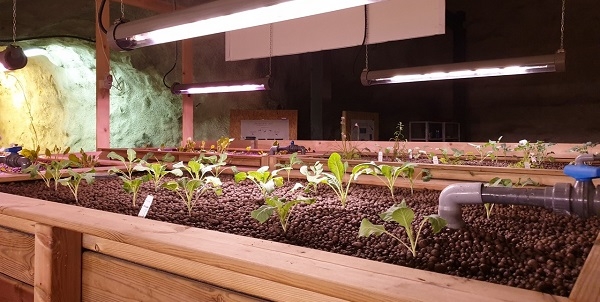Already in 2015 it was established that globally we lose 12 million hectares of arable land for food production through degradation of the soil annually. To survive, humanity must find new and renewable methods to produce food. We also need to learn from our past and find methods that are sustainable, use renewable resources and contribute to decarbonizing our society. The Swiss Center for Applied Underground Technologies (SCAUT) has developed and commissioned the first 'Underground Green Farming' prototype for a sustainable food production by using aquaponics. Aquaponic systems combine aquaculture with hydroponics in a symbiotic environment. The project is divided in three parts : fish, vegetables and biofilters.
The system works in a cycle: water from the fish ponds is fed to a hydroponic system and then recirculated back to the aquaculture system. The use of LED lighting allows for stimulating plant growth through specific targeting of certain light frequencies. The link with Carbon Capture and Storage allows for use of CO2 turning it from a waste to a feedstock. A further phase would be to investigate the possibility of using CO2 from carbon capture and storage schemes for plant growth and thereby conversion of CO2 to O2. With SCAUT's underground green farming concept, several harvests per year will be possible. Underground green farming offers the opportunity to produce food locally in urban areas – exactly where the demand is. Consequently, there is no need to ship food all over the world. Underground Spaces offer constant climate conditions – extensive cooling during summer or heating during winter is therefore not required.


